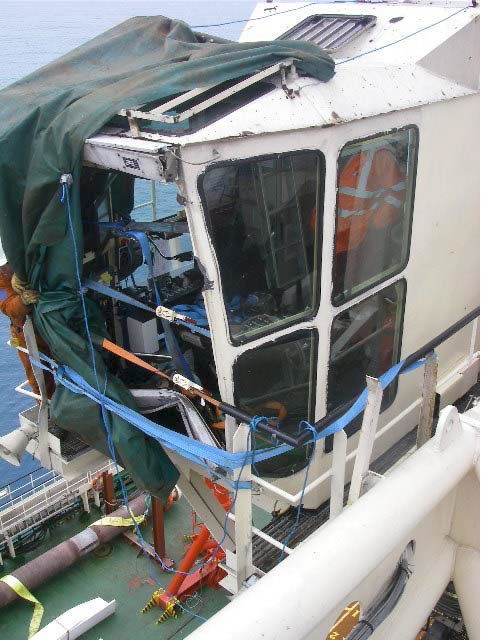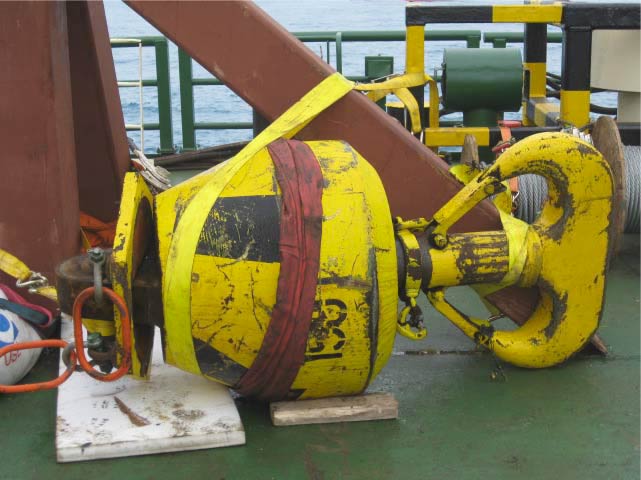Near-miss: Crane winch wire damaged crane cab during heavy seas
A member has reported an incident in which, owing to the sudden movement of the vessel, a crane winch wire hit the crane cab with the operator inside, causing damage to the cab structure. The operator was unharmed. The incident occurred after completing the wet storing of a spool using the single fall main block. The crane boom, complete with suspended spool lift rigging, was recovered to the main deck. Whilst the block was over the deck, the vessel pitched and rolled heavily thus causing the crane block to swing adversely. The crane operator attempted to recover the situation. As he attempted to recover the block, the wire immediately above the block hit the crane cab damaging the cab structure and breaking glass. The impact showered the crane operator with glass.
This ‘routine’ operation had the potential to be a fatality. There was no designated landing area for which to land the crane block and its attached rigging safely. This had been considered a ‘routine’ operation yet the risks had not been fully captured during the planning stage.



Subsequent to an investigation, the following were noted:
- The landing area on the aft deck for the block and rigging was very restricted due to a tall subsea structure being in the same area;
- The crane boom position had to be at a 12m radius and the block had to be lifted high in order for the block and attached rigging to be lifted over the subsea structure. This position left the block at the same height as the crane cab.
The following recommendations were made:
- A safe landing area on the main deck should be identified and clearly marked both on the deck itself and on the General Arrangement (GA) drawings;
- If it becomes necessary to use this area, a specific risk assessment should be required and an alternative, temporary safe landing area identified;
- Lift planning should cover crane operations from start to finish, including the initial movement of the crane and also recovery of rigging to deck.
Safety Event
Published: 1 November 2011
Download: IMCA SF 12/11
IMCA Safety Flashes
Submit a Report
IMCA Safety Flashes summarise key safety matters and incidents, allowing lessons to be more easily learnt for the benefit of all. The effectiveness of the IMCA Safety Flash system depends on Members sharing information and so avoiding repeat incidents. Please consider adding [email protected] to your internal distribution list for safety alerts or manually submitting information on incidents you consider may be relevant. All information is anonymised or sanitised, as appropriate.
IMCA’s store terms and conditions (https://www.imca-int.com/legal-notices/terms/) apply to all downloads from IMCA’s website, including this document.
IMCA makes every effort to ensure the accuracy and reliability of the data contained in the documents it publishes, but IMCA shall not be liable for any guidance and/or recommendation and/or statement herein contained. The information contained in this document does not fulfil or replace any individual’s or Member's legal, regulatory or other duties or obligations in respect of their operations. Individuals and Members remain solely responsible for the safe, lawful and proper conduct of their operations.
